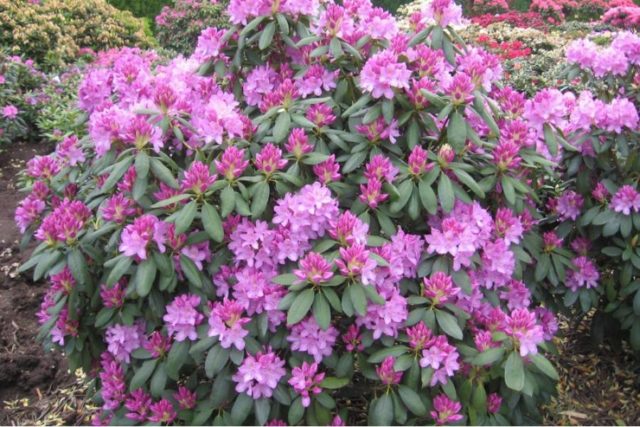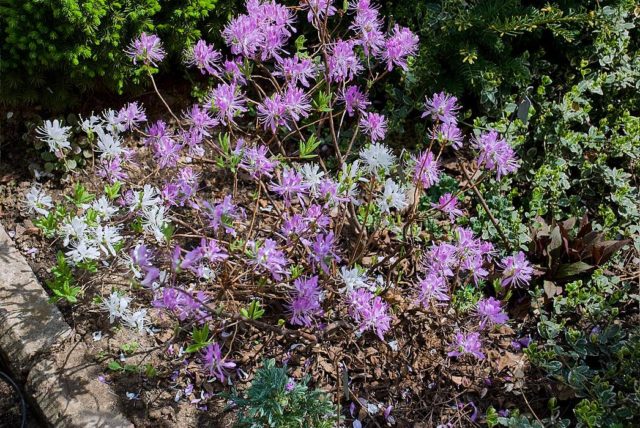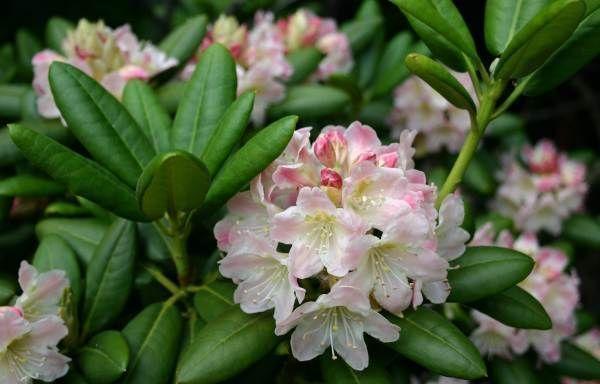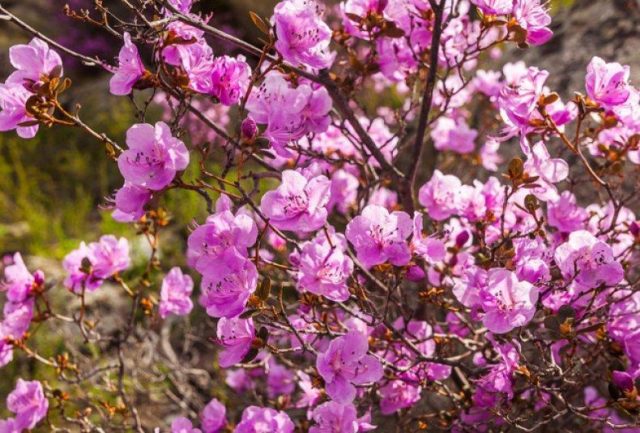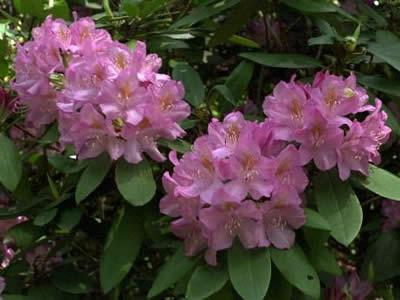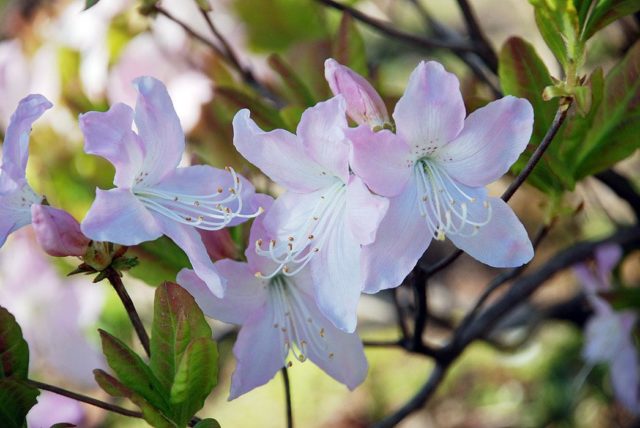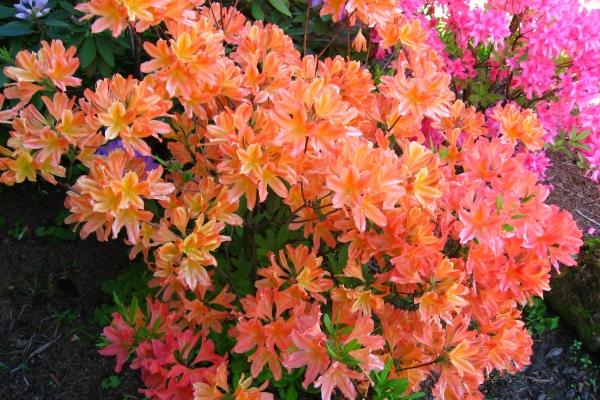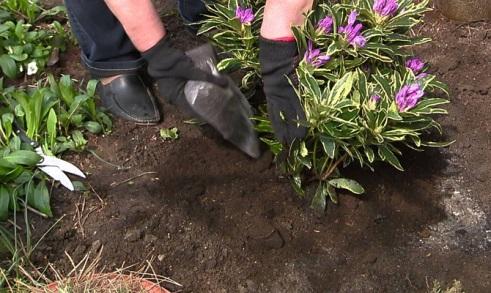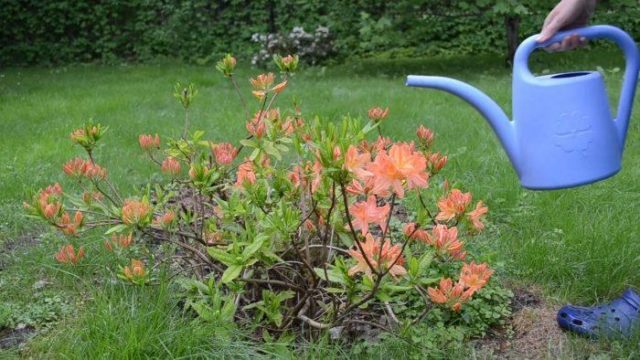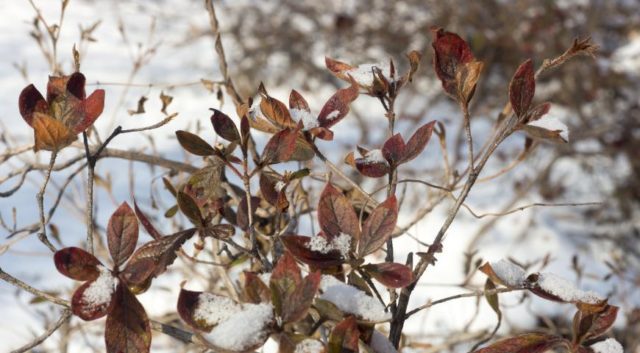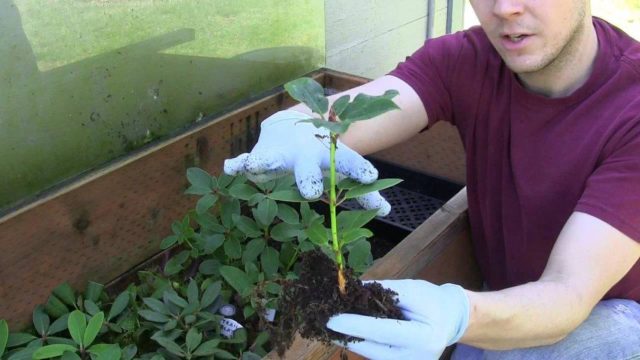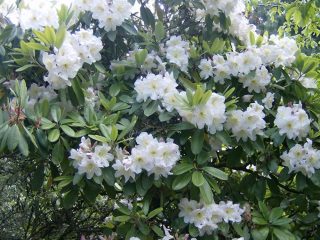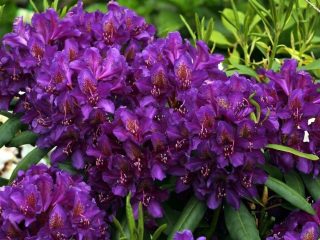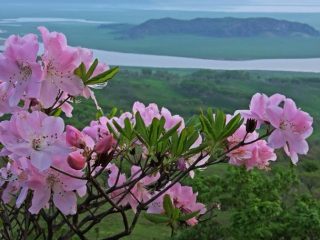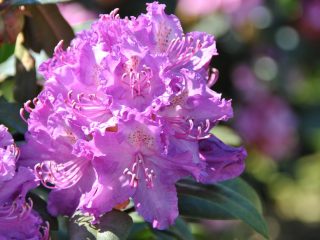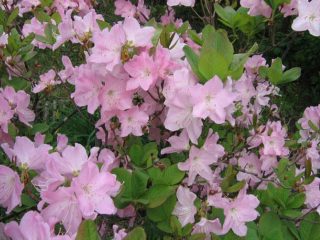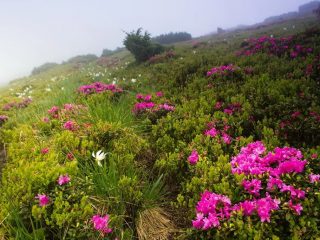Content
- 1 Features of growing rhododendrons in the Moscow region
- 2 The best varieties of rhododendrons for the Moscow region
- 3 Planting and caring for rhododendrons in the Moscow region
- 4 What to do if the rhododendron is frozen
- 5 When does rhododendron bloom in the Moscow region?
- 6 Why don't rhododendrons bloom in the Moscow region?
- 7 Reproduction
- 8 Diseases and pests
- 9 Conclusion
- 10 Reviews about rhododendrons in the Moscow region
Rhododendron is a stunningly beautiful plant, numerous varieties of which delight the eye with a palette of colors and a variety of shapes. However, many gardeners are convinced that this crop is not so easy to grow anywhere except in countries with a warm tropical climate. Nevertheless, in central Russia it is very possible to become the owner of an exotic shrub or tree. That’s why it’s so important to know the varieties of rhododendrons for the Moscow region with photos and names and the features of plant agricultural technology for this region.
Features of growing rhododendrons in the Moscow region
Although rhododendrons are native to tropical latitudes, they have been successfully cultivated throughout Europe for many years. In the Moscow region they also managed to adapt, but their cultivation is associated with some nuances:
- It is necessary to choose a variety suitable for cultivation in a particular region. It must be frost-resistant to survive the cold winter months.
- It is regularly necessary to mulch the shrub using pine needles or tree bark. Mulching plays a key role in winter; without this procedure, rhododendron of any variety will not be able to survive until the arrival of spring and will freeze.
- You should not loosen the soil around the bush, since rhododendrons have a shallow root system that can be damaged during the procedure.
- Weed removal should only be done by hand. In this case, unwanted vegetation is simply pulled out, without using available tools, so as not to injure the rhizomes.
In addition to these features, recommendations for planting and care should be followed. Proper care of rhododendrons in the Moscow region will be rewarded with abundant flowering and well-groomed appearance of the bushes.
The best varieties of rhododendrons for the Moscow region
Rhododendrons amaze the imagination with the abundance of varieties and colors. However, not all of them can be successfully grown in central Russia. In the Moscow region, as a rule, only frost-resistant varieties take root well. And although it may seem that such a restriction significantly narrows the range of plants with which you can decorate your summer cottage, among these varieties there are enough bright representatives for every taste. Below with photos are presented only some varieties from the extensive list of rhododendrons suitable for the Moscow region
Katevbinsky
This evergreen rhododendron is a true long-liver among other varieties and has an average lifespan of 100 - 150 years. It reaches a height of up to 4 m even in the Moscow region and stands out for its large leaf blades, the average length of which is 15 cm. Their surface is glossy, dark green, with prominent veins. The reverse side of the leaves has a pale tint. At the end of spring, this variety produces lilac or white flowers that form numerous dense inflorescences up to 6 - 7 cm in diameter.
Canadian
Canadian rhododendron is a dwarf deciduous shrub and is excellent for the climate of the Moscow region due to its unpretentiousness and resistance to temperature changes. It is a low bush up to 1 m in height and 1.5 m in width. Young shoots of rhododendron are bright yellow-red in color, darkening with age, covered with narrow, pointed and slightly curled leaves of a blue-green tone. The unusually shaped pink-lilac flowers of the plant, blooming in May-June, are odorless.
Short-fruited
The short-fruited rhododendron, or Phori, is an evergreen native to Asia. In the wild, it can grow up to 6 m, but in the Moscow region this variety has more modest dimensions - 2 - 2.5 m. Although it has massive leathery leaves, its crown is quite compact and does not need pruning. The Fori variety is memorable for its showy flowers collected in corymbose inflorescences. One inflorescence can contain from 10 to 15 pale pink or white flowers. The flowering period of this shrub occurs in June, but this does not occur until the rhododendron reaches the age of 20 years.
Ledeboura
The semi-evergreen variety Ledebura, also known as Maralnik, can withstand frosts down to 30 oC. This feature allows it to feel comfortable even in the cool climate of the Moscow region and quickly recover after winter. This rhododendron grows up to 1.5 - 2 m, and its flowering period sometimes repeats 2 times per season - at the end of May and the beginning of September. At this time, racemose inflorescences with pink bell-shaped flowers up to 5 cm in diameter appear on branches with small shiny leaves.
Smirnova
Although the birthplace of the evergreen rhododendron variety Smirnov is Turkey, it has adapted well to the weather conditions of central Russia, in particular the Moscow region. Outwardly, it looks like a 1.5-meter shrub with wide long leaves up to 15 cm. During flowering, this variety pleases the eye with red-pink flowers in inflorescences of 10 - 15 pieces with yellow specks on the petals.
Schlippenbach
Schlippenbach rhododendron is classified as a deciduous variety, which in its natural habitat grows up to 4 m. In the Moscow region, this shrub grows much more slowly, the height of adult specimens is 1.5 - 2 m. However, this does not in any way affect the flowering of the variety. It is abundant and often begins even before foliage appears on the plant. The flowers of this rhododendron have a light purple color and a pleasant aroma. In addition, they have long, slightly curved stamens, up to 10 pieces. The green leaf blades of the shrub are small and smooth, turning red, orange and yellow in autumn.
Japanese
Japanese rhododendron is valued by gardeners more than other deciduous varieties because of its impressive decorative appearance and is quite suitable for growing in the Moscow region.Its flowering is magnificent and lasts from mid-May to mid-June. Rhododendron flowers of this variety with a diameter of 8 - 10 cm have a bright orange or red color with yellow transitions. On a low shrub, 1.5 m high, they resemble bright flames that completely hide the narrow green leaves underneath.
Planting and caring for rhododendrons in the Moscow region
Some plant lovers are put off by the tropical origin of rhododendrons, as they think that these exotic shrubs are very whimsical. In fact, this is far from the case, and even novice gardeners can grow many varieties of rhododendrons in the Moscow region if they know how to plant them and what care procedures need to be carried out.
When to plant rhododendron in the Moscow region
In order for rhododendron to take root well and delight with lush flowering in the conditions of the Moscow region, you should carefully consider the timing of planting the crop. As a rule, the most suitable time for this procedure is spring, when the sun has not yet entered into full force, but the frosts have already passed, and the soil is sufficiently warm and moderately moist. In weather such as in the Moscow region, rhododendrons can be planted in the fall. The main thing is to do this no later than October, so that the bush has at least 2 - 3 weeks to adapt to new conditions before the onset of stable cold weather.
How to plant rhododendron in the Moscow region
Half of the success when breeding rhododendrons in the Moscow region depends on the place where they are planted, so you need to approach the selection of the site where you plan to grow the plant wisely.
Even the most frost-resistant varieties of rhododendrons are very sensitive to the sun and strong winds, so the planting site should be well protected from drafts and direct sunlight. The ideal area for planting will be the north or northeast side of the house, where the shade from the building will cover the plants from the heat. Can also place rhododendrons under the shade of tall fruit crops, oaks or pine trees. They will become a natural awning for rhododendrons. If it is not possible to place shrubs next to spreading trees, it is worth shading the rhododendrons using special canopies. You can make them yourself using special material, which should be secured to stakes driven into the ground. Such a canopy should be 1.5 times higher than the bush and have space for ventilation. Lutrasil with a density of 60 g/m2 and spunbond, stretched in 2 layers, have proven themselves well as a shading material in the Moscow region for rhododendrons of all varieties.
When choosing a place to plant a plant, you should give preference to elevated areas so that melt water in the spring does not wet its roots. You can strengthen the elevation and prevent its deformation by surrounding the plant with stones.
As for soils, these exotic shrubs prefer moderately moist, acidic soil.If the soil at the planned planting site has a high pH level, it must be acidified manually. You can do this in several ways:
- adding sphagnum peat or heather soil to the soil;
- adding potassium sulfate, superphosphate or ammonium sulfate;
- adding a mixture of fallen pine needles, crushed pine and spruce cones to the soil.
Having decided on the site, you can begin planting the plant, guided by the following steps:
- Before planting, a 1 m thick layer of soil should be removed from the planting hole.
- At the bottom it is necessary to place a drainage made of broken brick or crushed stone 25 - 30 cm high, then sprinkle it with 10 - 15 cm of sand.
- Rhododendron needs to be planted in the ground and covered with an earthen mixture of red high-moor peat, loam and pine needles in a ratio of 2:3:1.
- When moving different varieties of rhododendron into the soil, it is necessary to carefully monitor so that the root collar of the bushes is not buried, otherwise the plants will not be able to bloom and will quickly die.
- The distance between tall plants should be at least 1.5 - 2.0 m, medium-growing - 1.2 - 1.5 m. The distance between low-growing varieties should be 0.7 - 1 m.
- Upon completion of planting, the soil around the shrub must be watered and mulched with peat or pine needles, retreating 2 - 3 cm from the base of the plant.
How to water and feed
In the climate of the Moscow region, it is worth paying special attention to watering rhododendrons of all varieties.These plants are very moisture-loving due to their tropical origin, so during the budding period they should be provided with rain or settled water 8 - 10 times a month in small portions, so that the moisture constantly saturates the soil to a depth of 20 - 25 cm, but does not stagnate. An excess of liquid, as well as a lack of it, can be fatal for rhododendron of any type, and therefore it is worth adjusting the plant watering regime, focusing on the precipitation characteristic of the Moscow region. But, despite the weather conditions, all varieties stop watering by mid-August in order to stop the active growth of shrubs and begin preparing them for winter.
Rhododendrons, including varieties growing in the Moscow region, respond well to fertilizing, so to ensure healthy growth and lush flowering of shrubs, they should be fertilized periodically. The optimal time for this procedure is considered to be from the beginning of spring to mid-summer, and in early March nitrogen fertilizing will bring a lot of benefits, and in June, after the exotic varieties have already bloomed, it would not be a bad idea to apply phosphorus and potassium fertilizers. A good option for feeding various varieties of shrubs in the Moscow region can be cow manure mixed with water in a ratio of 1:15. The resulting mixture must be allowed to brew for 7 - 10 days, after which it should be watered with rhododendrons at the very base.
Stop feeding plant varieties at the beginning of July so that they have enough time to exit the active growth phase before the onset of winter.
How to prune rhododendrons
Rhododendrons of any variety maintain their crown quite well, as a result of which they do not require decorative pruning. However, some connoisseurs of these plants, who want to give the shrub a more compact and well-groomed appearance, subject them to a similar procedure after flowering has completed.
In the spring, as a rule, before the beginning of the growing season, rejuvenating pruning is carried out. It consists of removing damaged and weak branches of rhododendrons and shortening last year’s strong shoots. To do this, approximately half the branches of a healthy plant are cut with sharpened pruning shears, leaving no more than 40 - 45 cm from the base. This will not only improve the growth of varieties, but also make flowering more abundant.
How to cover a rhododendron for the winter in the Moscow region
Adult rhododendrons of most winter-hardy varieties growing in the Moscow region practically do not need shelter for the winter, as they can survive at temperatures down to -25 - 35 ° C. However, many plant growers prefer to take certain protective measures to preserve these plants until spring. This is especially true for young rhododendrons up to 2-3 years old, which must be protected from frost, regardless of the variety.
An assortment of shelters for exotic shrubs are sold in special stores, but you can easily build them yourself at home. Thus, dwarf shrubs survive the winter without problems under an ordinary cardboard box wrapped in plastic film to avoid getting wet.The size of the box should be larger than the plant itself so that the branches do not come into contact with the cardboard, otherwise there is a risk that the rhododendron will freeze. It is necessary to make holes on the sides of the box to allow air to flow into the bush.
For larger varieties, you can build a small greenhouse for the winter:
- Before the soil freezes, metal arcs are installed that will serve as a frame for the greenhouse. In this case, the distance between them should vary from 40 to 45 cm, and between the arc and the crown of the rhododendron there should be a space of 15 - 20 cm.
- As soon as the temperature is established within -8 - 10 °C, the arcs are covered with lutrasil or agrotex in 2 - 3 layers.
- After this, an additional plastic film is placed over the entire structure, since covering materials tend to allow moisture to pass through.
When to open rhododendrons after winter in the Moscow region
When removing cover from plants after winter, you should not rush. The weather in the Moscow region in March is still quite deceptive, and the spring-like warm sun can be replaced by frosts in a matter of hours. Therefore, rhododendrons should be opened no earlier than the beginning of April, focusing on the climatic characteristics of the region.
Shrubs are not immediately freed from protective structures. In early April, in warm cloudy weather, they are opened for 5 - 6 hours for ventilation. At night, the rhododendrons are closed again, leaving gaps on both sides. In the second half of the month, if the soil has thawed by at least 20 cm, the shelters are completely removed.
What to do if the rhododendron is frozen
Often, rhododendrons in the Moscow region, even with winter shelter, suffer from frostbite. This happens for various reasons, but it can almost always be avoided with the help of proper plant care. If the disaster has already occurred and the bush is frozen, you need to immediately begin actions to save the plant:
- Affected shoots must be pruned back to healthy wood. This is true for most varieties, except for the small-leaved evergreen rhododendrons, which can regrow without pruning.
- Spraying the crown with warm water with the addition of Epin at the rate of 10 drops of the substance per 5 liters of water 2 - 3 times with an interval of 4 - 5 days helps a lot.
- The base of the plant should be watered with a solution of Kornevin or Heteroauxin.
- Be sure to shade the bush on the south and west sides.
- Adding acidifiers or nitrogen fertilizing to the soil will also help bring rhododendron back to life.
Following these recommendations should have a beneficial effect on the condition of the plant, provided that the rhododendron root system has not died. The main thing is that you should not rush and use all the remedies at the same time, otherwise this will further undermine the health of the weakened bush. Before trying a new method of resuscitating a damaged plant, you should wait 7-10 days after the previous one, observing the condition of the rhododendron.
When does rhododendron bloom in the Moscow region?
Frost-resistant varieties of rhododendrons, even in the Moscow region, are distinguished by abundant flowering if they are properly cared for. The timing of flowering may vary among different varieties, but most of them form buds from the second half of May or in early June.In the northern regions, this time shifts somewhat to the middle of the first summer month.
Why don't rhododendrons bloom in the Moscow region?
If in due time the plants bred in the Moscow region do not bloom and there is not a single bud on the bushes, the reason lies in a violation of the agricultural practices of rhododendrons:
- Placing the plant in bright light rather than partial shade can affect its development. Such a shrub needs to create shelter from the sun.
- Exotic varieties may not bloom due to low soil acidity. Fertilizers with added iron or chemical acidifiers will correct the situation.
- Insufficiently nutritious soil also affects the formation of flowers. Carrying out mandatory fertilizing will ensure healthy growth of rhododendron.
- Regular watering of the plant should not be ignored. Dry soil forces the rhododendron to waste nutrients to support life, which is why its flowering suffers.
- Sick or pest-affected shrubs also do not have enough energy to bloom, so it is necessary to regularly treat them against diseases for preventive purposes.
- The decorative quality of the bush may suffer from crows that feast on flower buds. A shelter made of light-colored material will help get rid of bird infestations.
Reproduction
There are many ways to propagate rhododendrons, but in the conditions of the Moscow region, frost-resistant varieties bred by cuttings and sowing seeds take root best.
Seed propagation is carried out according to the following algorithm:
- Seeds are planted in a pre-prepared substrate of 3 parts peat soil and 1 part sand and sprinkled with sand.
- Cover the seedlings with glass or cling film.
- Future plants are placed in a bright, well-ventilated room without direct access to sunlight.
- As the soil dries, irrigate it with a spray bottle.
- Every day the seedlings are provided with ventilation for 2 - 3 hours.
- As soon as sprouts appear, young rhododendrons are transplanted into larger containers. Greenhouse conditions are maintained during the first year of life, after which the plants are transplanted to a permanent location.
To propagate winter-hardy varieties of rhododendron from cuttings you will need:
- Cut shoots of healthy two- or three-year-old plants into cuttings 5–8 cm long.
- Remove all leaves from the bottom edge of the plant material.
- Dip the cuttings in Kornevin solution or another mixture to stimulate growth for 10 - 14 hours.
- Place the shoots in a peat-sand substrate and cover with plastic wrap.
- Until the rhododendrons take root, it is necessary to maintain the soil temperature in the range of 8 - 14 °C.
- With the arrival of spring, seedlings can be moved into open ground.
Diseases and pests
Although winter-hardy varieties of rhododendrons that are suitable for growing in the Moscow region are little susceptible to various pests and diseases, some insects and fungi can cause significant harm to the health of shrubs. Among the most common parasites are the following types:
- scale insect;
- spider mite;
- rhododendron flies;
- Mealybugs.
It is possible to rid exotic varieties of such a scourge with the help of specialized insecticides, which are available in herbal pharmacies and gardening stores.
Diseases of rhododendrons are mostly represented by various fungi:
- rust;
- rot;
- spotting.
You can fight these ailments using a solution of copper sulfate. In order to prevent these diseases, they practice spraying plants with Bordeaux mixture in the spring and autumn.
According to reviews, many rhododendrons, regardless of variety, in the Moscow region often suffer from a disease such as chlorosis. It develops in those plants that grow in insufficiently acidic soil. To improve the condition of the affected shrub, oxidizing substances or iron-containing fertilizers, such as ground sulfur or Cytovit, are added to the soil.
Conclusion
The presented varieties of rhododendrons for the Moscow region with photos and names are distinguished not only by frost resistance, but also by excellent decorative qualities. If you follow the growing recommendations, these plants will decorate the area for many years.
